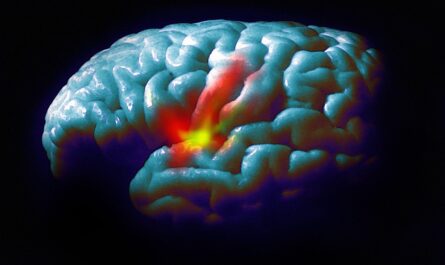Back pain is a prevalent issue affecting a significant portion of the population. According to the most recent 2023 Health Report by the German health insurer DAK, musculoskeletal ailments, especially back complaints, account for approximately 18 percent of sick notes submitted by employees. Despite a slight decline in the percentage of reported absences related to back pain, as indicated in the report, it remains a common health concern placing just behind COVID-19 and respiratory ailments in terms of individual diagnoses.
Surprisingly, back pain is not only prevalent among older individuals but is also increasingly affecting young people. Professor Rainer Burgkart of TUM Klinikum rechts der Isar explains that this trend predates the COVID-19 lockdowns. The Burden Disease Incidence Study conducted in 2020 by the Robert Koch Institute (RKI), involving data from over 5,000 patients in Germany, found that almost two-thirds of respondents (61.3%) reported back pain in the previous year. Lower back pain affected 55% of women and 48.6% of men, while one in three women (32.6%) and one in five men (22%) suffered from upper back pain. Several years ago, the Institute for Health Economics and Management estimated that the economic impact of these ailments amounted to around 50 billion euros.
To address this issue, a team at TUM Klinikum rechts der Isar, in collaboration with the Munich Institute of Robotic and Machine Intelligence (MIRMI), fitness equipment manufacturer Erhard Peuker GmbH, and hardware and software specialist B&W Embedded Solutions GmbH, have developed the GyroTrainer. This back muscle training device aims to provide long-term, personalized back exercises.
The GyroTrainer, a result of three years of research, consists of a round platform with a diameter of 50 cm. The platform can be tilted to the front, back, and sideways, as well as rotate. Resembling a gyroscope, the device is designed to maintain balance in various configurations and positions.
Users step onto the round platform and attempt to maintain balance. Sensors and electric motors beneath the platform register the user’s movements and can adjust the tilt and rotation of the disk. The device functions similarly to a balance board, with the flexibility to vary the stiffness. Users are challenged to stabilize themselves. Adjusting the device for each individual is not as simple as setting it up, according to researcher Elisabeth Jensen from MIRMI. Finding the suitable stiffness level for an individual is the initial step. Once an individual can comfortably maintain balance at a specific stiffness level for a certain duration, a learning algorithm determines the appropriate initial setting for the platform, ensuring it is neither too easy nor too difficult.
Following the setup phase, training can commence. The team’s cooperation partners have developed a computer game wherein control is influenced by the user’s movements, inspired by the game Space Invaders. The user’s spaceship automatically fires at approaching invaders while evading incoming shots. Maintaining stability and maneuvering the spaceship require skill and concentration. The less rigid the platform setting, the more challenging it becomes to maintain balance and control. The device also introduces disruptive elements. The platform may suddenly rotate to the left or right, further increasing the difficulty level. Initially, the platform feels firm under the user’s feet but gradually becomes more unstable. For users in excellent physical condition, the platform offers additional pushes. Electromyography (EMG) sensors have affirmed that the system effectively activates the crucial abdominal and back muscles necessary for spinal stability. The activity becomes increasingly challenging with the rotational movement. Balancing movements are among the most effective methods for training, asserts Professor Burgkart, who envisions the new training device being utilized mainly for preventive purposes for both primary patients at elevated risk and secondary patients who have previously experienced back pain.
While the GyroTrainer has proven to be effective and serves its medical purpose, there are still some steps to be taken before its implementation as a product. Professor Burgkart emphasizes that the device should be suitable for use without the need for a physiotherapist or trainer. The researchers aim for it to dynamically adapt to the user’s ability. Currently, the GyroTrainer approximates and adjusts the individual stiffness based on measured data. In the future, artificial intelligence will enable the device to become an independent and secure logical system, setting the initial rigidity and selecting the difficulty level of the corresponding game options. It will also have the capability to make adjustments based on the user’s fatigue levels, daily condition, and training progress. Lastly, the device must be portable and fit into any living room, according to Professor Burgkart’s vision. This ensures that individuals can regularly engage in training without the need to visit a physiotherapist.
*Note:
1. Source: Coherent Market Insights, Public sources, Desk research
2. We have leveraged AI tools to mine information and compile it




